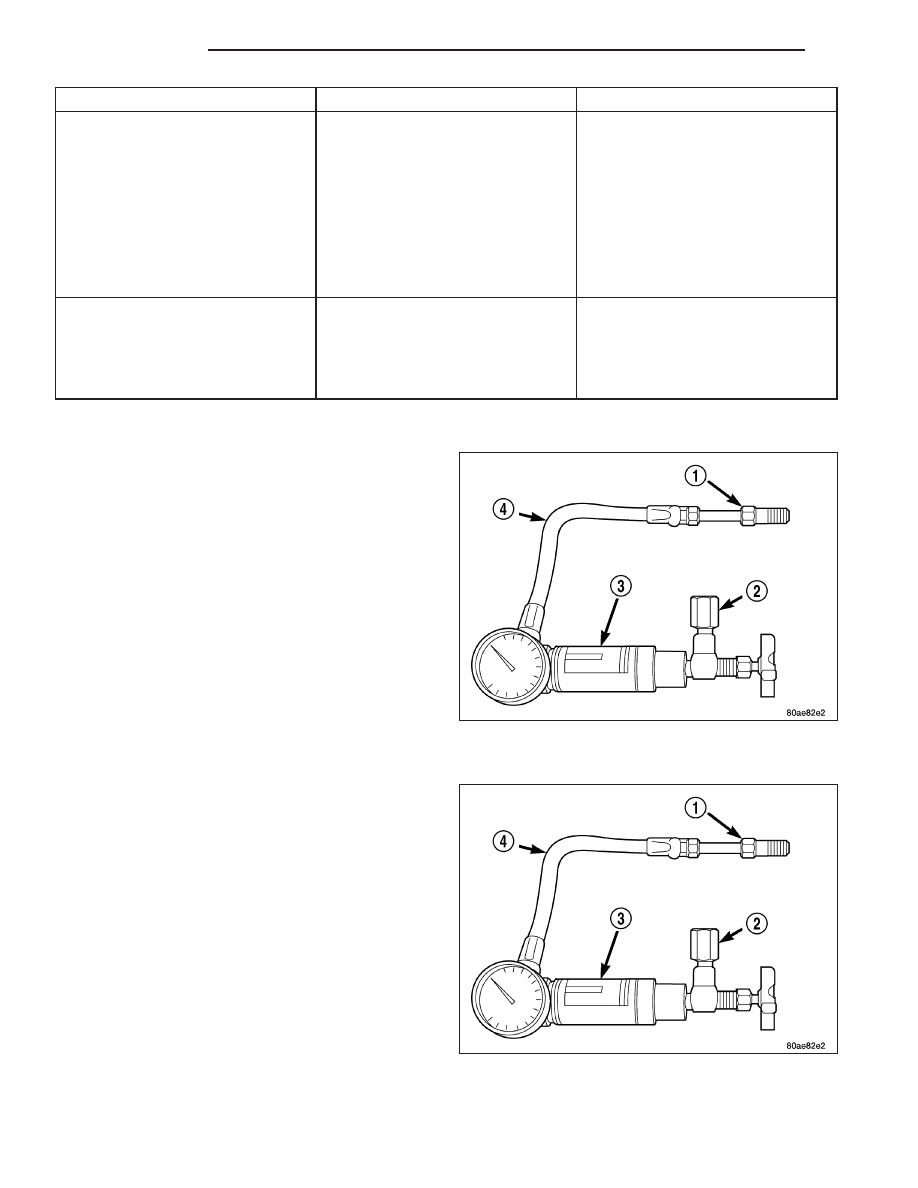Jeep Liberty KJ. Manual - part 976

CONDITION
POSSIBLE CAUSE
CORRECTION
EXCESSIVE PLAY IN STEERING
WHEEL
1. Worn or loose suspension or
steering components.
1. Inspect and repair as necessary.
2. Worn or loose wheel bearings.
2. Inspect and replace bearings.
3. Steering gear mounting.
3. Tighten / replace gear mounting
bolts/ isolators to specification.
4. Gear out of adjustment.
4. Replace gear.
5. Worn or loose steering
intermediate shaft.
5. Inspect and replace as
necessary.
VEHICLE PULLS, DRIFTS OR
LEADS TO ONE SIDE.
1. Tire Pressure.
1. Adjust tire pressure.
2. Radial tire lead.
2. Rotate tires.
3. Brakes dragging.
3. Repair as necessary.
4. Wheel alignment.
4. Align front end.
POWER STEERING FLOW AND PRESSURE
The following procedure is used to test the operation
of the power steering system on the vehicle. This test
will provide the gallons per minute (GPM) or flow rate
of the power steering pump along with the maximum
relief pressure. Perform test any time a power steering
system problem is present. This test will determine if
the power steering pump or power steering gear is not
functioning properly. The following pressure and flow
test is performed using Power Steering Analyzer Tool
kit 6815 and Adapter Kit 6893.
FLOW AND PRESSURE TEST
1. Check the power steering belt to ensure it is in
good condition and adjusted properly.
2. Connect pressure gauge hose from the Power
Steering Analyzer to Tube 6844.
3. Connect Adapter 6826 to Power Steering Analyzer
test valve end.
4. Disconnect the high pressure hose from the power
steering pump.
5. Connect the tube to the pump hose fitting.
6. Connect the power steering hose from the steering
gear to the adapter.
7. Open the test valve completely.
8. Start engine and let idle long enough to circulate power steering fluid through flow/pressure test gauge and to get
air out of the fluid. Then shut off engine.
9. Check fluid level, add fluid as necessary. Start engine again and let idle.
10. Check for air bubbles, Evacuate if necessary.
19 - 4
STEERING
KJ